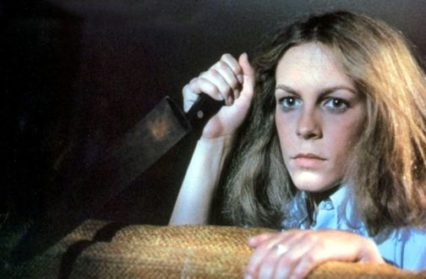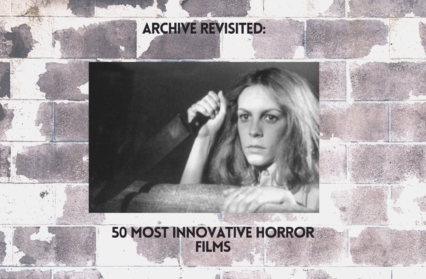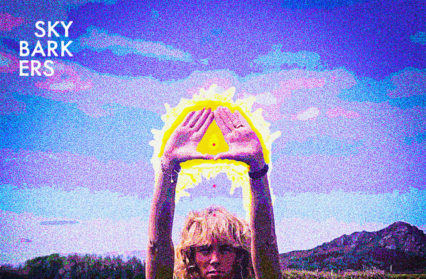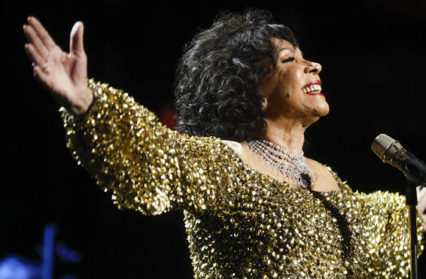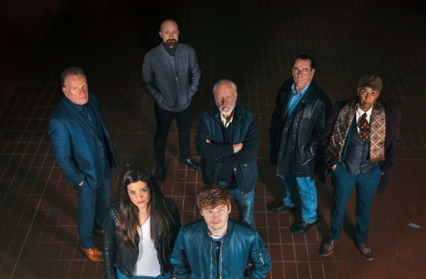In the latest in our series of essays defending the indefensible novelist David Llewellyn pens a love letter to David Lynch’s much-maligned movie adaptation of Frank Herbert’s iconic fantasy novel, Dune.
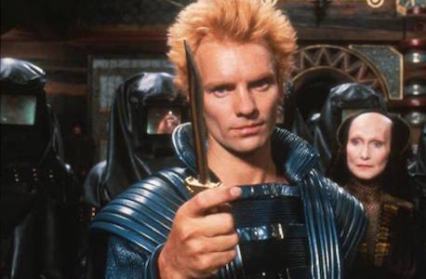
The director Mike Hodges (of getting Carter fame) tells the story of how, on first meeting producer Dino De Laurentiis, he asked why he – a director of thrillers – had been chosen for the camp sci-fi extravaganza Flash Gordon. In his husky Italian accent, Laurentiis replied, “Because I like your face.”
Perhaps a similar thought process lay behind the decision, by Dino and his daughter and protégé Rafaella, to pick an even more outré filmmaker, David Lynch, for their big-screen adaptation of Frank Herbert’s Dune.
The source material is a space epic like no other; the story of a feudal, intergalactic human empire in which the Padishah Emperor, noble Atreides and barbaric Harkonnen scheme and battle for control of a space-bending spice called Melange. There are mutant navigators, a psychic sisterhood, desert people with glowing blue eyes and – in the corpulent form of Baron Harkonnen – a flying, morbidly obese paederast. The avant-garde filmmaker Alejandro Jodorowsky famously tried adapting it in the mid-1970s, with production designs by H.R. Giger, music by Pink Floyd, and starring Salvador Dali as the Emperor of the Known Universe. Perhaps inevitably, the production collapsed before filming could even begin. With its Tolstoy-level cast of characters, complex world-building and smorgasbord of themes, many thought Herbert’s novel was unfilmable, and many continued to feel that way long after Lynch’s adaptation was released.
Before I discuss the film itself, I should make one thing clear: I am not about to tell you that David Lynch’s Dune is a masterpiece. It really isn’t. For one thing, there are at least three different versions of the film, one of which is so awful it was credited to the infamous Hollywood nom-de-shame, “Alan Smithee”. Even in its “official” version, it suffers from curious first act longueurs, clunky exposition and stuffy dialogue without a shred of humour.
What I’ll attempt instead is a defence of Dune both as a science fiction movie and a valid – if an eccentric – entry in the Lynchian canon.
This last point may be the more contentious – and therefore the more interesting – so let’s start with that. Because how can Dune, with its spaceships and sonic handguns and explosions and colossal worms, be a bona fide David Lynch movie? Trivia buffs will know that Dune wasn’t the first big-budget sci-fi gig he was offered; George Lucas had recently touted Lynch’s name as a potential director for the third (and apparently final) Star Wars movie Return of the Jedi. “Body horror” maestro David Cronenberg was also considered – which only raises the question, what the hell were they smoking at Skywalker Ranch in the early 1980s?
Understandably, Lynch turned the offer down, but he said yes to Dune. So what was it that made the desert planet of Arrakis and its sandworms a more appealing prospect than the Forest Moon of Endor and its Ewoks?
The reason becomes clear almost as soon as we meet Kenneth McMillan’s grotesque Baron Harkonnen. Floating around his grubby palace in an equally grubby jumpsuit, his face covered in suppurating boils, Harkonnen is one of the vilest characters to have graced a cinema screen. It’s a brilliantly unhinged performance, career-best stuff from McMillan, previously best-known for playing grouchy New York cops. In his very first scene, and for no reason other than his own sadistic glee, Harkonnen tears the “heart plug” (Lynch’s creation, not Herbert’s) from the chest of a pretty young slave, causing him to bleed to death. Later in the film, he leers with undisguised lust at his own nephew Feyd-Rautha, as portrayed by an oiled-up, semi-naked Sting.
Despite Dune having an accompanying range of toy spaceships and action figures (some of which I owned), this was not the stuff of summer blockbusters. Harkonnen is no Good vs Evil fascism avatar. If his brutality and implied sexual depravity remind us of anyone, it’s the monstrous (and all-too-human) characters played by Dennis Hopper in Blue Velvet and Willem Dafoe in Wild at Heart.
But violence and sexual depravity alone don’t make Dune “Lynchian”. I was struck, re-watching the film for this piece, by how its look prefigures the aesthetic of some of Lynch’s later work. The curved, dark metal of the Guild Navigator’s tank and the Harkonnen battleships will be seen again in the surreal, kettle-shaped structures of Twin Peaks’ White Lodge.
For a film set in the distant future, Dune’s look is far from futuristic. Its spaceships and interiors don’t just look “lived in”, like those of Star Wars or Alien, but positively baroque. The worlds of Dune are ones of faded glamour and past glories; the Atreides’ like the doomed monarchies of fin-de-siecle Austria and Russia, the Padishah Emperors’ dripping in gold tracery, like an 18th Century Italian court at its most decadent. While Star Wars has shiny droids, Dune has human slaves whose eyes and ears are sewn shut and replaced with painful-looking biomechanical accessories. The militaristic and patriarchal Atreides are only our “good guys” because everybody else in this universe is so bloody awful.
There are several narrative quirks that mark Dune out as something very different from Star Wars and its pretenders; movies such as Krull, the Star Trek franchise, and Battle Beyond the Stars. The film opens by breaking the fourth wall; Virginia Madsen’s Princess Irulan in close-up against a backdrop of stars, telling us everything we need to know before the film properly begins. On paper, this might seem no different to the opening crawls before Star Wars or Blade Runner, but on film, there’s something hypnotic about our gaze meeting Irulan’s. What’s more, she isn’t even a major character in the film, appearing only once or twice, making her more like the framing narrator of a 19th Century novel.
And this isn’t the only literary device used by Lynch. Throughout the film, we hear even the most fleeting thoughts from almost every character, and though it may take a little getting used to, it’s an essential part of the film’s storytelling. The psychological and spiritual journeys of its characters, and in particular Paul Atreides (Kyle MacLachlan), are every bit as important as the political skulduggery and battle sequences.
Though it has its fair share of enormous sets and matte painted backdrops, many scenes are shot in close-up. Indeed, the producer Rafaella De Laurentiis tells of how Lynch would film reaction shots from the film’s stars when there were 2,000 extras standing idly in the background. Some of this can be put down to Lynch’s inexperience; this was only his third feature film. But though it could be seen as a shortcoming, this focus on individual faces gives Dune a more intimate, character-based feel than many sci-fi epics. Between its glorious effects shots and stirring action scenes, it takes detours into the minds – and even bodies – of its main players. Many of these dreamlike sequences were shot by the film’s Second Unit cinematographer, Frederick Elmes, who had previously worked with Lynch on Eraserhead, and those scenes often share that film’s expressionistic intensity.
Images of burning flesh, dripping water, an unborn baby in utero, and Duke Leto’s poisoning, green gas pouring from the gaping hole in his cheek, are where we see Lynch’s fingerprints most clearly. The film’s soundscape too, with its ominous industrial drones and howling winds, feels closer in spirit to the oppressive urban gloom of The Elephant Man or Inland Empire than other space operas. He may have been a director for hire, and his troubled experiences on Dune may have put him off making big-budget movies for life, but it remains a very Lynchian film, all the more subversive for having cost $42million dollars.
As science fiction, I believe it falls into a category – almost a subgenre – of which I’m very fond. There’s no catchy, elegant name for it, and so I think of it only as “Large-Scale, Noble Failure Science Fiction”. These are the movies that, while interesting or visually arresting, fall short of greatness. Films such as The Black Hole, Wachowski’s Jupiter Ascending and Luc Besson’s Valerian and the City of a Thousand Planets. Or there’s John Carter, more exciting and interesting than Avatar, a film whose success it so clearly tried to emulate.
Dune is, in my opinion, the greatest Large-Scale, Noble Failure Science Fiction movie (LSNFSFM?) of them all. Its director had never, and would never again work on something of that scale or in that genre (though you could argue that Mulholland Drive, Lost Highway and Twin Peaks all have sci-fi elements). Unlike Blade Runner, another cult movie with disappointing box office, it wouldn’t become the visual template for how that kind of film is made. It stands alone in its strangeness and daring.
That might not last for very long. Later this year we’ll have yet another adaptation of Dune (there were two TV miniseries between 2000 and 2003), from Arrival director Denis Villeneuve. It could be that Villeneuve and his co-writers are the ones who finally deliver a big-screen version that pleases audiences, critics and Herbert fans alike. But even if the latest Dune is a runaway success, even if it’s a visually sumptuous box office hit, it can’t hope to have that spiky, discomfiting Lynchness that makes the 1984 film worth seeing.
David Llewellyn‘s latest novel A Simple Scale is out now from Seren books. David Llewellyn is also an avid contributor to Wales Arts Review.
For other articles included in this collection, go here.


